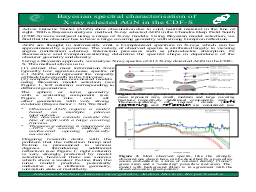(back to all presentations)Table of contents |
Author: Johannes Buchner Homepage: http://astrost.at/istics/ Further information: Johannes Buchner, Antonis Georgakakis, Andrea Merloni, Kirpal Nandra
|
(back to all presentations)Table of contents |
Author: Johannes Buchner Homepage: http://astrost.at/istics/ Further information: Johannes Buchner, Antonis Georgakakis, Andrea Merloni, Kirpal Nandra
|